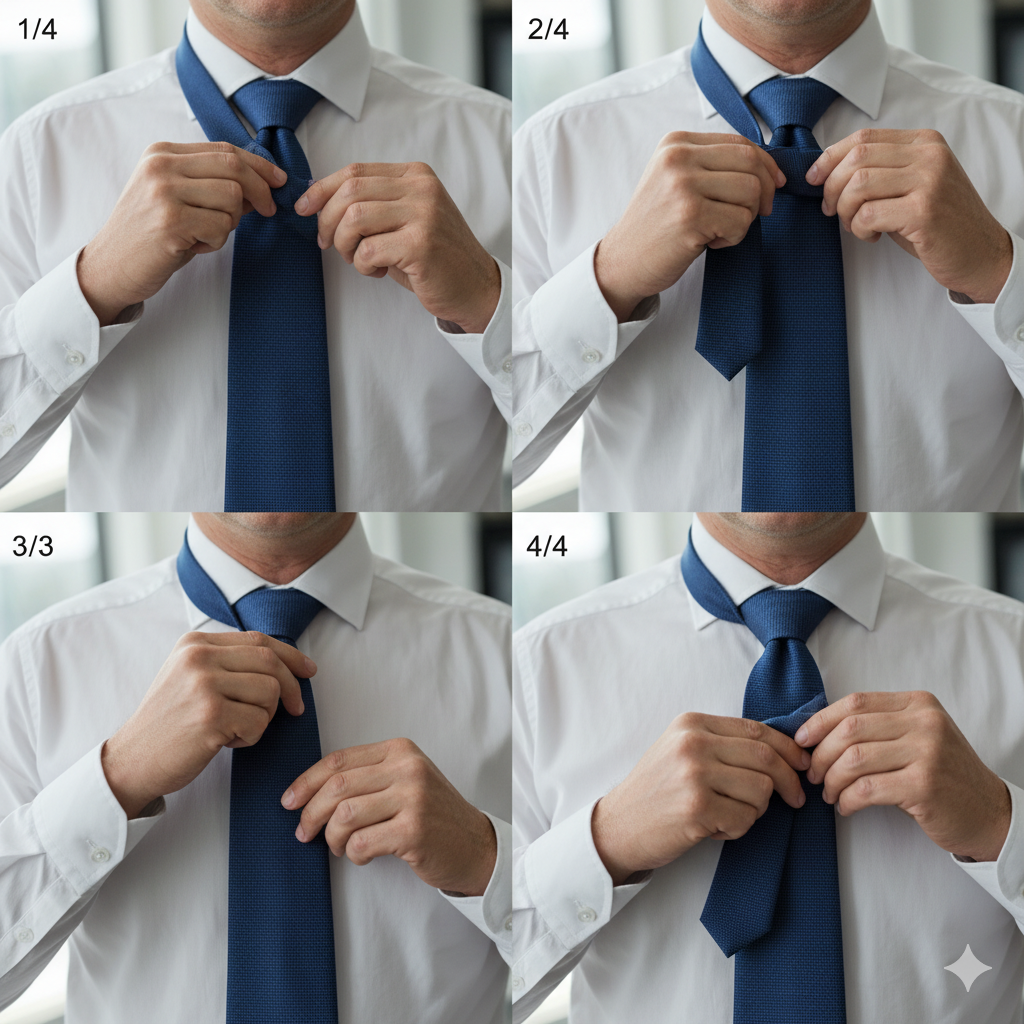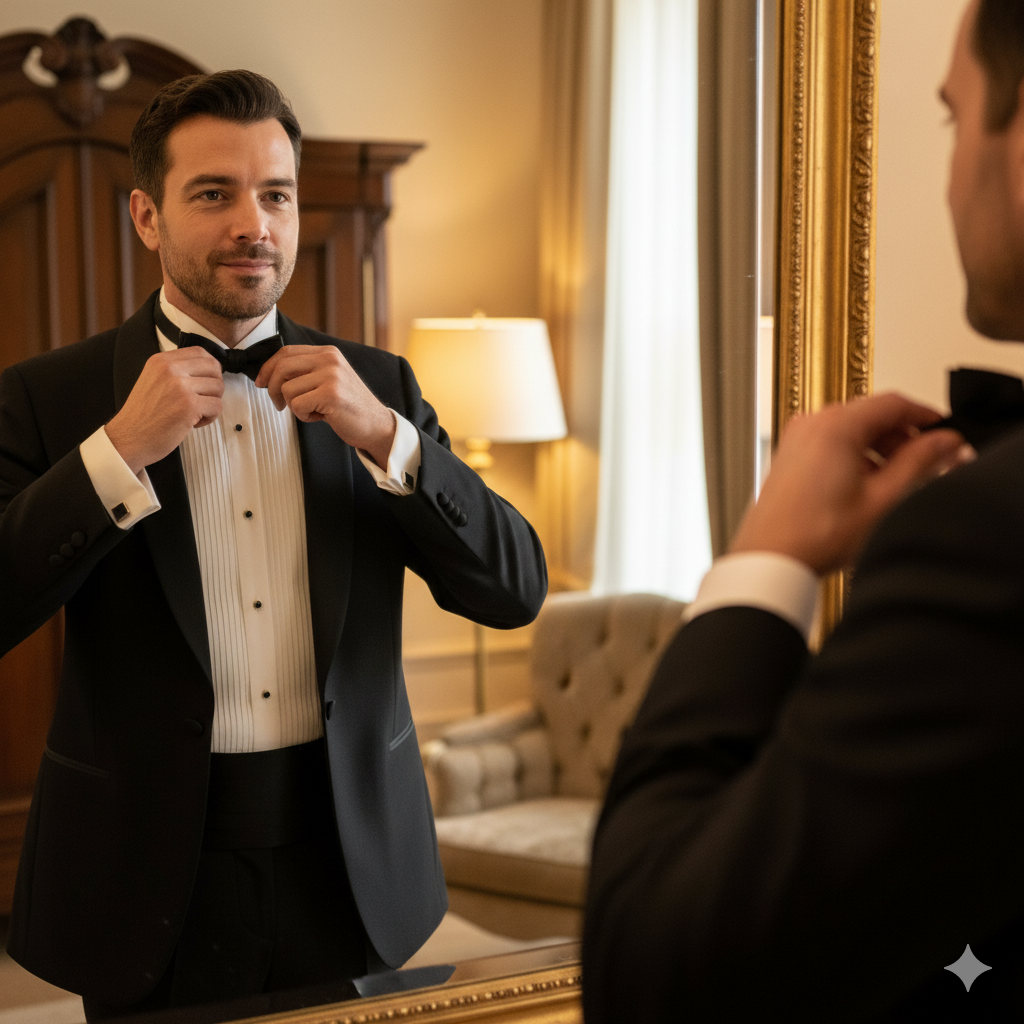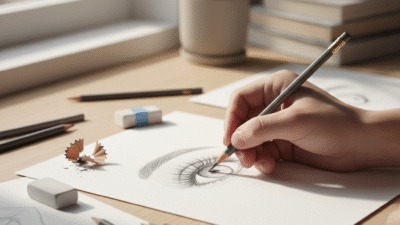It’s early morning. You’re standing in front of the mirror, adjusting your collar before that big interview, wedding, or first day at work. Your hands move nervously, unsure of where each end of the fabric goes. That small piece of silk seems more intimidating than it should be. But once you master how to tie a tie, that nervousness transforms into quiet confidence. It’s not just a fashion ritual—it’s a moment of self-assurance, pride, and personal polish.
Why Learning How to Tie a Tie Still Matters
In a world of hoodies and casual Fridays, you might wonder if knowing how to tie a tie still matters. The answer is a resounding yes. A tie is more than an accessory—it’s a symbol of care, effort, and respect. Whether it’s a job interview, a graduation, or your wedding day, a properly tied tie tells the world: I’m ready.
Beyond formality, learning this timeless skill connects you to decades of tradition and style. Every well-tied knot is a sign of precision and pride.
The Essentials Before You Begin
Before you learn how to tie a tie step by step, make sure you have the right setup:
- A clean, wrinkle-free tie
- A collared shirt that fits comfortably
- A mirror with good lighting
Pro tip: The ideal tie length ends exactly at the middle of your belt buckle. It’s the golden rule of proportion.
Understanding Tie Anatomy
Before diving into tie knot styles, get familiar with your tools:
- The wide end (blade): the visible part of the tie
- The narrow end (tail): the hidden part
- The knot: the centerpiece of it all
Once you know these parts, every tie knot becomes much easier to master.
The Four-in-Hand Knot: The Best Starting Point
If you’re a beginner wondering how to tie a tie for the first time, start with the Four-in-Hand knot—the oldest and simplest of all tie knot styles.

Steps:
- Drape the tie with the wide end longer.
- Cross the wide end over the narrow one.
- Bring it underneath and over again.
- Pass it up through the neck loop.
- Pull it down through the front and tighten.
Result: A slightly asymmetrical, relaxed look that suits most shirts and occasions.
The Half Windsor Knot: Balance and Versatility
The Half Windsor knot strikes the perfect balance between simplicity and formality. It’s medium in size and works well with most collar types.
Steps:
- Start with the wide end on your right.
- Cross it over the narrow end and bring it up through the neck loop.
- Pull it down to the left, then wrap it across the front.
- Bring it back up through the loop and down the front.
This knot creates a clean, triangular shape—perfect for business or semi-formal wear.
The Full Windsor Knot: Power and Precision
When you need to command attention—at weddings, boardrooms, or special events—the Full Windsor knot is your power move.

How to Tie It:
- Drape the tie with the wide end longer.
- Cross it over the narrow end.
- Bring it up through the neck loop and back down.
- Wrap it behind the narrow end and repeat on the other side.
- Cross it over the front, then pull it down through the loop.
Result: A full, symmetrical knot that radiates confidence and authority.
The Pratt (Shelby) Knot: Sleek and Modern
The Pratt knot, or Shelby knot, is perfect for a neat, medium-sized tie knot that looks modern and professional.
Steps:
- Start with the tie inside out.
- Cross the narrow end over the wide end.
- Bring the wide end up through the neck loop.
- Pull it down, wrap across the front, and through again.
It’s elegant and ideal for business settings where subtlety meets sophistication.
The Bow Tie: A Timeless Statement
The bow tie isn’t just for black-tie events—it’s for anyone who wants to stand out with classic flair.

How to Tie a Bow Tie:
- Place it around your neck, one end longer.
- Cross the longer end over the shorter and loop it underneath.
- Fold the shorter end into a bow.
- Drop the longer end over the bow and pull through the loop behind it.
- Adjust gently for symmetry.
Every bow tie’s charm lies in its slight imperfection—it’s a symbol of individuality.
Choosing the Right Knot for Every Occasion
Different tie knot styles work best for different moments:
- Four-in-Hand: Daily wear or casual events
- Half Windsor: Professional meetings
- Full Windsor: Formal or high-profile occasions
- Pratt: Modern business look
- Bow Tie: Weddings, galas, and celebrations
Always match your tie knot with your collar type and tie fabric. Wider collars work best with larger knots, while narrow collars pair with simpler ones.
Common Mistakes and How to Fix Them
Even pros slip up! Avoid these pitfalls:
- Wrong length: Tip should reach your belt buckle.
- Crooked knot: Always center it.
- Skipping the dimple: A small crease below the knot adds elegance.
- Leaving it tied overnight: Always untie to avoid wrinkles.
Attention to these small details separates stylish from sloppy.
Real-Life Moment: The Interview That Changed Everything
Picture this—you’re moments away from an interview that could change your life. You stand in front of a mirror, steady your breathing, and tie a perfect Half Windsor. That tiny knot becomes your armor. You walk in tall, confident, and collected.
That’s the true power of learning how to tie a tie—it’s not about fashion, it’s about confidence.
Tie Care and Maintenance Tips
Keep your ties sharp and long-lasting:
- Always untie after wearing.
- Roll or hang ties to prevent creases.
- Spot clean gently—never machine wash.
- Steam (don’t iron) to remove wrinkles.
Treat your tie like an investment, and it will reward you for years.
Frequently Asked Questions (FAQs)
Q1: What’s the easiest tie knot for beginners?
The Four-in-Hand knot—simple, quick, and suitable for any collar.
Q2: How long should a tie be when finished?
The tip should rest right at the middle of your belt buckle.
Q3: Can I wash my tie in a washing machine?
No. Always handwash gently or dry-clean only.
Q4: How do I make the perfect dimple?
After tightening, pinch just below the knot while pulling down slightly.
Q5: Which tie knot is most professional?
The Full Windsor knot—clean, symmetrical, and powerful.
Q6: How can I tie a tie quickly?
The Four-in-Hand knot is the fastest and easiest to memorize.
Q7: What’s the best tie knot for weddings?
The Half Windsor or Full Windsor—both elegant and balanced.
Conclusion: Confidence Begins with the Knot
Mastering how to tie a tie is about more than fashion—it’s about pride, patience, and presentation. Every knot you tie connects you to a tradition of elegance and self-confidence. Whether it’s a job interview, a wedding, or a big presentation, your tie isn’t just an accessory—it’s a reflection of how you feel about yourself.
Stand tall. Breathe. Tie your knot. You’re ready for anything.





